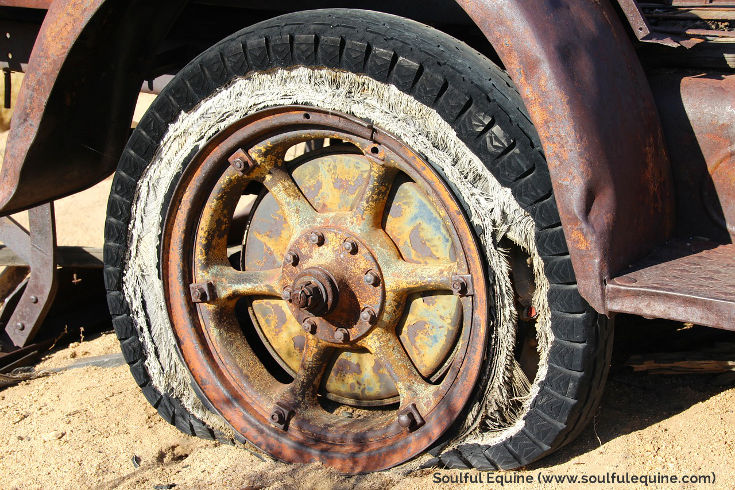
I’m sure, at one time or another, we’ve all heard the good, the bad, and the ugly about taking a horse barefoot. You’ve probably gotten wind of numerous barefoot stories, read articles on websites, read about it in popular publications, or you may have witnessed it yourself.
Depending on whom you surround yourself with (both offline and online), you’ll either hear mostly good or mostly bad information about natural hoof care.
Just imagine how disappointed you’d be if you pulled your equine partner’s shoes and it didn’t “work.” You’d probably feel betrayed and become one of the naysayers, and with good reason.
What if you decided to start trimming your own equine partner because someone said to you, “Yes, YOU can trim your own horses!” and as a result, they started having lameness problems?
Depending on the type of person you are, you may start talking badly about barefoot and find someone to blame rather than looking at yourself as the root cause.
Positive Change Equals Resistance
Usually if a great idea or concept is something that can create positive change, there will most likely be resistance, even if that change is for the better.
I’ve come to realize that it doesn’t matter how great an idea or concept is, when placed in the wrong hands and without enough knowledge, it can develop a bad reputation.
The “bad” side of the equation is usually created by the ignorant, over-confident and by those who secretively feel threatened that “the great idea” will cause them to lose business.
What is a cynic? A man who knows the price of everything and the value of nothing.” ~ Oscar Wilde
What Gives Natural Hoof Care a Bad Name
Although I could probably come up with many more (maybe you can help me), here are 7 guaranteed ways that I believe natural hoof care gets a bad name.
1. Pulling Your Horse’s Shoes Without Adequate Knowledge or Help
This is probably the #1 offender. Usually someone jumps on the “bandwagon” of going barefoot and thought it would be a great idea for their equine companion. They read in a popular publication about the benefits and that it could increase equine performance.
From there, they decided to call their traditional farrier out to pull the shoes assuming he knows about how to properly transition a horse to barefoot.
The result, he didn’t know and it didn’t work.
The core principles for maintaining a sound barefoot horse were never addressed, nor was the horse transitioned properly. Now you’re left with an equine companion that’s uncomfortable and unrideable, and you have a competition to attend NEXT WEEK!
The result, barefoot doesn’t work and you slap the metal shoes back on and swear to never try it again.
2. Focusing Solely on the Hoof
In my article, What’s Your Excuse for Not Taking Your Horse Barefoot, I discussed the importance of natural horse care and how it relates to the concept of a sound barefoot horse.
Natural hoof care is all about natural horse care. There’s no way around it.
Therefore, if you focus solely on the hoof, you’ll only get so far. So, you may as well put the metal shoes back on or you could create a mind shift and make a change.
It’s up to you.
3. Trimming Your Own Horses
I’m all about a person learning to trim her own equine partner if they have proper supervision, however, many people don’t invest enough time with a qualified professional to competently learn how to trim.
Two keys in that sentence are “a person” and “her own horse.” It’s one thing to learn to trim your own horse, but it’s something much different to competently learn to trim and read many horses.
It’s do-able, but it takes considerable time and commitment that most people aren’t willing to invest.
So, once a natural hoof care professional has gotten your equine companion to a maintainable state, you can learn to maintain her yourself, but once again, I’m talking about your horse, to a maintainable state that you fully understand.
Therefore, you fully understand how to read your equine partner’s hooves and apply your tools appropriately.
Unfortunately, many times the results in these cases are mediocre at best because the person only took a few trim lessons and can hardly use the tools competently.
This is when over-confidence leads to ignorance, and it’s just one more thing that gives barefoot a bad name.
4. Not Properly Reading the Hoof
Properly learning how to read the hoof takes time and experience. A novice will have difficulty with this task.
Thinking there’s a cookie cutter approach to trimming a barefoot horse will get you into trouble. Each hoof, equine, and situation is different, which means you need to be a great problem solver.
It’s no longer about nailing on a metal shoe to cover up soundness problems. This is why hiring a competent natural hoof care practitioner is vital.
A great hoof care professional provides more value than the cost of the trim.
That’s one reason a trim performed by a natural hoof care professional should be more expensive than a typical farrier “flat pasture trim.” There’s no comparison,and those who attempt to compare the two types of trims are comparing apples to oranges.
If someone is advertising a cheap price to do a “natural trim,” that should be a red flag. You can probably find a lot of these people on Craig’s List if that’s the route you want to go, even though it may not be in your equine partner’s best interest.
5. Infrequent Trimming Schedule
A naturally kept barefoot horse usually requires more frequent trims, especially during certain times of the year, like in the spring and summer months.
Most people are use to having their horses shod or trimmed about every 8 weeks (by that time, imbalances have occurred).
This is not the same for a sound barefoot horse. Depending on the situation, a transitioned barefoot horse should be trimmed every 4-5 weeks. Some times it may be more frequent.
Again, it depends on the situation and the horse. The goal is to keep your barefoot horse in optimum balance.
If you allow your equine companion to get out of balance, become long and chipped up, or develop underrun heals or forward foot syndrome, then why bother?
You may think trimming that frequently will cost more, but I’d like to challenge you to go crunch some numbers before you make that assumption. Be sure to take into consideration long-term soundness and vet bills. 🙂
6. Invasive Trimming Practices
There are many schools of thought when it comes to trimming and maintaining a sound barefoot horse.
To me, none of those “schools of thought” matter if your equine partner is telling you otherwise. For example, if your horse walks off less sound than she did before the trim, then that’s a problem.
For many years, much of the horse industry has accepted as normal that a horse is usually sore-footed the first week after a trimming or shoeing. This is a red flag and should NOT be the norm.
If it does happen on those rare occasions, the hoof care professional should be able to tell you why it happened but it shouldn’t be the norm.
Something interesting to consider, if a traditional farrier causes your equine partner to be sore, it’s generally accepted, but if a natural hoof care provider causes your horse to be sore, then people go out of their way to shout it from the mountain tops.
7. Not Investing in Knowledge and Value
Not investing in education is an issue I see consistently throughout the horse industry – especially when it comes to basic foundational horse care knowledge.
It’s common for equine guardians to be clueless about soundness. Being blind to understanding more about your equine companion’s soundness can be dangerous.
I’m not implying that you have to learn to trim your own horse or know as much as your hoof care provider; however, I do expect you to be knowledgeable enough to make more informed decisions.
Most importantly, take responsibility for your decisions and actions rather than pointing fingers.
Invest in knowledge and invest in a natural hoof care professional who provides their customers more value than the cost of the service.
This doesn’t mean find someone cheap who will give you lots of free time and service. It means finding someone who not only values you as a customer, but who also values their time and what they have to offer.
That will usually mean you’ll pay a little more, but it’s well worth the investment.
If It’s Meaningful Work That Causes Change, You Will Meet Resistance
In reality, no matter if your intent is good and you do great work, there will still be those naysayers and gatekeepers who will work hard to squash something meaningful that causes positive change in the world.
It’s a fact of life.
What matters is how you react to it and how you manage your energy.
It’s best to not cut yourself down to the level of the naysayers, because the people who give natural hoof care a bad name are not worth your time, so spend your energy and time wisely.
Instead, invest in setting good examples that create positive change in the world.
Intellectuals solve problems; geniuses prevent them.” ~ Albert Einstein
Keep it soulful,
Stephanie Krahl
